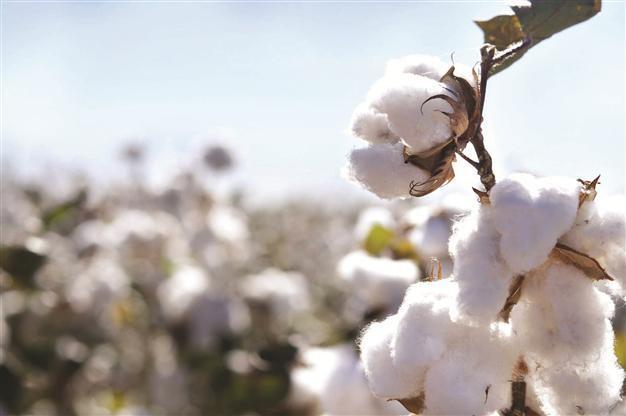China to begin sales from cotton reserve
BEIJING/NEW YORK-Reuters

China, the world’s top cotton consumer, will start sales from its huge reserves of fiber very soon, but it could face stiff competition from India. DHA Photo
China, the world’s top cotton consumer, will start sales from its huge reserves of fiber on Nov. 28, the China National Cotton Exchange said, but trade sources expect tough competition from cheap Indian imports.The sales, aimed at increasing supply to the domestic textile market, had been expected for weeks, contributing to a sharp drop in prices on ICE. Spot prices fell to their lowest since January at just under 74 cents a pound last week from near 94 cents in August.
The announcement, posted on an industry website, did not offer details on the volumes to be sold or the sale price, although the cotton is widely expected to be priced at 18,000 yuan ($3,000) per ton for fiber from the 2011 crop.
The selling price, about 70 percent above the December cotton contract on ICE, may not attract strong demand.
“Mills have a lot of choice. New Indian material has just arrived and will increase a lot to the end of the year,” said a source at a Chinese trading house.
Chinese buyers importing new Indian cotton can pay about 17,700 yuan per ton, just under the reserve price, even including a full 40 percent tariff, traders said.
India’s new crop quality may also be slightly better than China’s 2011 crop, they added, and Indian exporters may be willing to offer better prices.
“India will fight for its market share. They have the possibility to drop their price which the reserves can’t do,” said another trade source.
Chinese textile mills are also facing tight credit and weak yarn prices, with reserve sales set to push yarn prices down further.
One trader said he expected China to put about 1 million tons of cotton up for sale through to March next year, from its reserves of about 10 million tons, half of the global stocks of the fiber.
It is not clear if buying from reserves will bring additional import quotas. Last year, buyers were issued an import quota for 1 ton of cotton for every 3 tons bought at state auctions, but industry website CNcotton.com reported that no quota will be allocated by the reserves.
“The 3-for-1 system put a lot of demand into the world market, and now they’re restricting the amount of cotton coming into China,” said Ron Lawson, a partner at commodity investment firm LOGIC Advisors, although he noted traders’ expectations that China may be planning a new import system.
“It’s not price supportive,” Lawson said of the impact China’s latest move will have on world cotton prices.
About 1.5 million tons of additional imports were allowed last year on top of the 894,000 tons of 1 percent tariff quota agreed under Beijing’s WTO commitments, according to estimates.
But China is likely reluctant to issue new quotas this year.
“For 2013/14, the main concern for the government is to release stocks, not more quota,” said the Chinese trader.
















